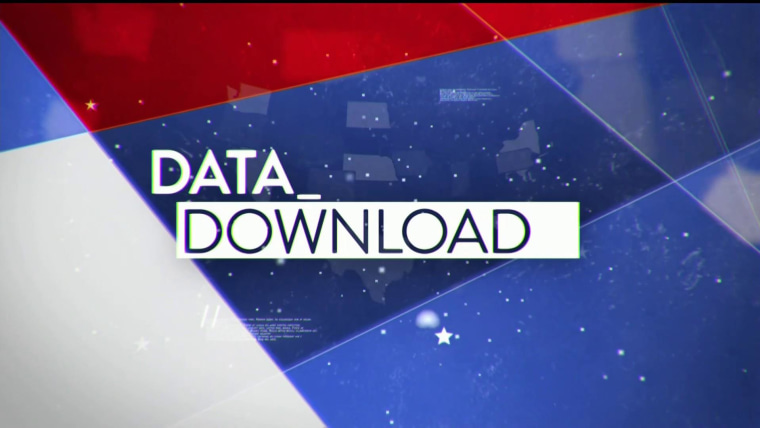WASHINGTON — You may love Donald Trump or you may hate him, but he has left a big mark on the American political scene, and his impact seems to have reached into the parties themselves — changing who identifies as a Republican and as a Democrat.
New data from the Pew Research Center show notable shifts in the demographic compositions of the two parties since 2015, before Trump arrived on the scene. From gender and race to education and geography, the parties have seen sizable shifts, with the GOP slipping among a range of different groups.
Start with the split that has defined politics over the past 40 years: the divide on gender. The Pew data show that the gender gap is alive and well in American politics, but they also show a net Democratic gain.
Republicans have long been the male party, and their identification advantage among men is unchanged, at 8 percentage points. But the numbers among women have moved sharply in the Democrats' favor. In Pew's latest data, a merge from 2018 and 2019, Democrats held an 18-point ID edge among women, up from a 12-point advantage in 2015.
Add it together and the gender gap has grown from 20 points to 26 points in Democrats' favor.
All those numbers include "leaners" — people who say they lean toward one party or the other — so there is some soft support for each party. But soft support still matters. It means people are predisposed to back a party and its candidates, something that can be crucial in close races.
The partisan divide over race, meanwhile, seems to be changing in some groups. For years, non-Hispanic whites have leaned Republican, while other racial and ethnic groups have leaned Democratic. Since 2015, Republicans have seen their edge among white, non-Hispanic people slip, while, at the same time, the Democrats have grown their advantage among other groups.
The GOP lead in party ID among whites has fallen to about 11 points in Pew's 2018-19 data. It was 14 points in 2015. Among African Americans, Democrats have maintained their advantage in the new data, up very slightly to 73 points from a 71-point edge in 2015. The Democratic ID edge among Hispanics has climbed a bit, about 5 points, to 34 points from 29 points in 2015. And the Democratic advantage among Asian Americans has skyrocketed in the last few years to a 55-point edge, up from a 26-point lead in party ID in 2015.
Overall, the Republican edge among white voters looks fairly stable, down only slightly. But when you look closer at the white, non-Hispanic group, a lot is happening under the surface, particularly around education.
Republicans have grown their advantage among white voters who do not have college degrees. They now hold a 24-point party ID edge among that group. In 2015, the GOP held a 21-point lead.
But among whites with college degrees, the numbers have moved sharply in the other direction. Democrats and Republicans drew equal support among that group in 2015, when 47 percent identified with each party. But in the latest data, whites with college degrees leaned Democratic by 12 points.
That's a 12-point swing in the Democrats' favor, and it likely has a pronounced impact in communities with more college graduates — particularly urban areas where people with college degrees tend to cluster.
And the Pew data also show shifts in urban and rural communities.
The Democratic ID advantage in urban areas has grown sharply since 2015, to 31 points, a 7-point increase from where the party was in 2015. Meanwhile, the Republicans have seen a huge swing in party ID in their favor in rural America. The GOP has a 23-point rural edge, up from 14 points in 2015.
In the suburbs, Republicans have seen their advantage erode to a single point — 47 percent to 46 percent. In 2015, the GOP held a 4-point party ID edge.
None of those numbers is determinative, of course. Candidates matter, and so do issues. But going into the 2020 election, the numbers suggest that the people who call themselves Republicans look different from five years ago.
Download the NBC News app for breaking news and politics
The party that was once the bastion of wealthy white establishment voters is morphing into something else, and, as it does, there could be some cause for concern for Republicans. The groups among whom the party is gaining support — rural America and whites without college degrees — are not the parts of the population that are growing.
The current Republican coalition was enough for Trump and the Republicans to win narrowly in 2016, but as the nation's demographics shift, it could be more challenging in 2020. And if the two parties stay on this course, it could prove even more difficult for the GOP in elections to come.
